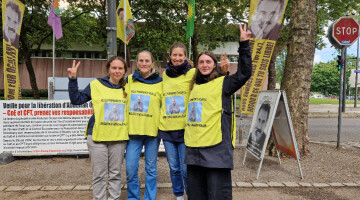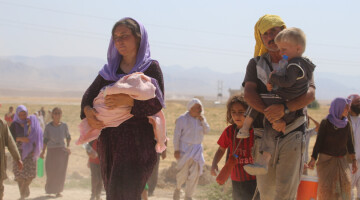The German parliament has overwhelmingly approved a resolution calling for a commemoration of the genocide committed by the Ottoman Empire against Armenians other Christian minorities in 1915.
The resolution on the Armenian genocide passed with support from all members of the four parties in the Parliament; with only one abstention and one vote against.
President of the German Bundestag Norbert Lammert who spoke before the voting said the existing government of Turkey cannot be held responsible for what happened during the World War I, stressing that the current government will, however, have responsibility for what becomes of this in present times.
The Armenian Genocide was centrally planned and administered against the entire Armenian population of the Ottoman Empire. It was carried out during W.W.I between the years 1915 and 1918. The Armenian people were subjected to deportation, expropriation, abduction, torture, massacre, and starvation. The great bulk of the Armenian population was forcibly removed from Armenia and Anatolia to Syria, where the vast majority was sent into the desert to die of thirst and hunger. Large numbers of Armenians were methodically massacred throughout the Ottoman Empire. Women and children were abducted and horribly abused. The entire wealth of the Armenian people was expropriated. After only a little more than a year of calm at the end of W.W.I, the atrocities were renewed between 1920 and 1923, and the remaining Armenians were subjected to further massacres and expulsions. In 1915, thirty-three years before UN Genocide Convention was adopted, the Armenian Genocide was condemned by the international community as a crime against humanity.
It is estimated that one and a half million Armenians perished between 1915 and 1923. There were an estimated two million Armenians living in the Ottoman Empire on the eve of W.W.I. Well over a million were deported in 1915. Hundreds of thousands were butchered outright. Many others died of starvation, exhaustion, and epidemics which ravaged the concentration camps. Among the Armenians living along the periphery of the Ottoman Empire many at first escaped the fate of their countrymen in the central provinces of Turkey. Tens of thousands in the east fled to the Russian border to lead a precarious existence as refugees. The majority of the Armenians in Constantinople, the capital city, were spared deportation. In 1918, however, the Young Turk regime took the war into the Caucasus, where approximately 1,800,000 Armenians lived under Russian dominion. Ottoman forces advancing through East Armenia and Azerbaijan here too engaged in systematic massacres. The expulsions and massacres carried by the Nationalist Turks between 1920 and 1922 added tens of thousands of more victims. By 1923 the entire landmass of Asia Minor and historic West Armenia had been expunged of its Armenian population. The destruction of the Armenian communities in this part of the world was total.













